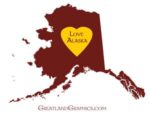Greetings photographers,
Please read the information below to acquaint yourself better with Greatland Graphics and the photo submission process.
Greetings photographers,
Please read the information below to acquaint yourself better with Greatland Graphics and the photo submission process.


The Alaska Wilderness League–advocating to keep Alaska’s wilderness for future generations to enjoy. www.alaskawildernessleague.org
Greatland Graphics strongly focuses on nature and natural history subjects. While people occasionally occur, they are typically small and contextually part of a larger nature scene. Check out www.greatlandgraphics.com for our current product line.
Sharp, well-exposed images
Thoughtful and compelling composition
Balanced use of negative and positive space
Effective use of color
Appropriate lighting, both in direction and temperature,
Simplicity (consider what is not in the picture, especially for backgrounds)
Intentional use of depth of field and eye direction control
Unique perspective
Greatland Graphics only publishes the work of photographers who live in Alaska.
Real nature photos take precedence over contrived ones.
Wild animals take precedence over animals in rehab and conservation centers. We don’t publish hired animals or captive game farm animals.
Image Adjustments and Alterations:
The cute and sometimes humorous animals sell well. They are not our favorite, but sometimes you must follow the marketplace.
A calendar picture on the wall for a month must hold someone’s interest.
Most people want a splash of color, especially in winter.
Be Alaska-specific. Pictures that scream Alaska are obvious contenders.
Dramatic, only-in-Alaska aerials are great.
Commonly viewed wildlife has a broad appeal and makes it into the calendars more frequently. Think bears, moose, and otters—but please send me a diverse range of wildlife–the less often observed animals are also appreciated.
Scenes with alpenglow or golden hour light, combined with water, reflections, mountains, and wildlife, are always a powerful trifecta.
Avoid directly front-lit subjects, including landscapes; it creates a flat and uninteresting look. Intense color and composition are essential for calendar images.
Photographer Nevada Wier offers an acronym helpful when judging a photo’s strength. CLAP(P) stands for Color, Light, Action, and Pattern (I added perspective). Any image with two or three of these is compelling. All four/five are award winners. And then, there are always exceptions to everything.
10 x 13 inches, horizontal format
12 images: 6 wildlife, six landscape (usually)
Short photographer bio and biopic for selected photographers
$250 per image, $150 cover bonus
Content: Statewide subjects almost always include bears and moose due to their universal appeal; at least one scene from Southeast Alaska, Denali, Aurora: big landscapes, unique wildlife. The cover for this title often includes wildlife, with compelling eye contact or emotive appeal. For Anchorage-area photographers, we generally are oversubmitted for Turnagain Arm; any scenic images from that area need to be particularly spectacular.
10 x 13 inches, horizontal format
12 images: 6 wildlife, six landscape
$250 per photo, $150 cover bonus
10 x 13 inches, horizontal format
12 images
$250 per photo, $150 cover bonus
Content: Diverse Aurora images from the entire state. More than any other, this subject requires good technical execution—colorful, well-composed, sharp-star, Aurora landscapes. The foreground is super important as it anchors the image in reality. Human elements are excellent, but pure nature and wilderness scenes are great. The grid sidebar will contain a brief description supplied by the photographer about capturing the photo—weather, time of day, temperature, etc.
6.25 x 9 inches, vertical, but will use almost 50% horizontal.
Fifty-four images, 50/50 wildlife and landscape.
$100 per inside image, $150 cover bonus, $60 back cover, $40 title page
Content: Diverse subjects across Alaska include a 50/50 split for vertical and horizontal wildlife and landscapes/nature. Think simple, strong, colorful, and evocative. Quotes from naturalists and philosophers accompany the pages with horizontal images. Some consideration for holiday-themed images is appropriate if kept generic. For Anchorage-area photographers, we generally are oversubmitted for Turnagain Arm; any scenic images from that area need to be particularly spectacular.
5 x 7 inches, horizontal and vertical
Statewide wildlife and landscapes
$200 per image for 7000 imprints. Reprint fee after that if renewed.
Approximately 40 greeting cards comprise our Greatland Greetings card line. 5×7 inch cards, blank inside, with natural history information on the back. This subject’s content differs slightly from a traditional, stand-alone nature scene because people buy a greeting message. A picture that says something—and has an embedded message—tends to have more retail substance. We try to balance the card line by region and subject material diversity while considering the image’s power. Successful selling cards will be relicensed after the imprint runs out.
April 1 – 30 (if you are away during this period, you may submit images earlier).
We are thinking about these calendars all year long, and if you think you made a unique or special photograph, feel free to send it my way any time during the year for a quick review.
Approximately 100 images across the product line. We pay from $17-20k per year in licensing fees.
Native RAW files or RAW files converted to DNG: (please do not export .tiff or .jpeg files as a . DNG). RAW files will be given selection priority.
Tiffs: if RAW files are unavailable.
Unsharpened, uncropped 8-bit files. (We may need to resize or work with more of the image, so knowing what is available is very helpful). Send a small jpeg if you want to show me your preferred crop. Of course, horizon line straightening crops are fine.
No JPEGs
Description / Caption | Location | Credit: (example: John J. D. Schmidt) Please put your copyright attribute in the copyright IPTC field. It is crucial for you to provide location information in order to place your image in the right calendar.
File naming protocol: first name-last name-sequential number: Ex: John-Doe-0001.dng (numbers and words ok)
All images in one zipped folder named: first name-last name-current year (Do not name the folder Greatland Graphics) Ex: John-Doe-2024
Option 1-Preferred) Drag and drop the zipped folder at www.greatlandgraphics.com/upload. (made active during the submission window)
Option 2) Not everyone may have internet bandwidth sufficient to deliver large digital files. Mail USB thumb drive (no DVD or D) to Greatland Graphics, PO Box 242894, Anchorage, AK, 99524-2894.
General photo submission tips.
First, the foundation for any photographer wishing to get published requires work that reflects good composition, technical excellence, and well-targeted content per the publication. What follows is nothing new for you veterans, but some may find the tips helpful in boosting your publication success rate.
Study each publication (historically) for style and subject material and select your images accordingly.
Know the consumer/audience. For example, Alaska Geographic represents Alaska’s Public Lands, a large Greatland Graphics customer. So, including scenes from Alaska’s National Parks and Public lands has intrinsic value. If two great moose photos are contenders, one taken in a National Park will likely have an edge in the selection process. Many of Greatland’s customers include local Alaskans, tourists, and Alaska lovers worldwide. While we have a faithful following of individuals, many who buy our products are tourists visiting the state.
Be conscious of location specifics and subject preferences. In general, I prefer academic honesty when presenting the subject matter. However, an animal commonly observed in one location, although taken somewhere else, can still be a candidate as long as the environment feels consistent.
Consider seasonal diversity (for calendar submissions). Some color included with winter scenes is helpful. Spring and winter are often underrepresented.
Ensure your digital files are technically well prepared and of appropriate resolution for the reproduction size.
Do not crop too tightly (actually, we prefer uncropped photos). Design and format reasons often require a little extra room. Trust the editor to crop appropriately. Don’t overdo it if you want to crop to present a compositional idea.
It’s about quality, not quantity. Don’t submit redundant or repetitive content. Significant variations of a similar subject are ok. If you have 100 good images, send them. If you have ten good photos, don’t send 90 poor ones. Let the editor pick from your best stuff after thoughtful preliminary editing.
Editors like easy access to the details of the photo. Fill in the IPTC information fields, including photo caption and description, location, and credit line information. All good photo management programs offer this feature. If yours does not, get one that does. I’m a big fan and a long-time user of Adobe Lightroom. Knowing how to use a DAM (Digital Asset Management) program like this will save you hours and hours.
Cover Images: A great cover image needs color, simplicity, copy space, emotional power, and shelf appeal from a distance. Test this by viewing it from 10-15 feet away. It should make you want to reach for it.
Be responsive, be responsive, be responsive. A design flow stays more intact when communication remains timely and responsive. Editors often juggle several options simultaneously, and having to wait a few days for a question to be answered can make or break a sale. And let’s face it: many photographers have communication gaps because they are off the grid in the field somewhere. If you are away for a while, consider activating an auto-response email during your absence.
Almost everyone appreciates and respects the value of someone’s time and resources. Politeness and courtesy go a long way. Photo editors can correspond with 50-100 people a day during the height of publication, and encountering a polite and helpful demeanor–in contrast to an antagonistic one–goes a long way.
With the margin lines thinning around us in nearly every conceivable way, efficiency may be one of the few metrics that remain in our control–at least to some degree. Almost anything on paper takes more time, and time is currency today. Simplicity gives way to efficiency, and efficiency gives way to productivity.
The better you and your editor know each other’s workflow, communication preferences, and style, the better the relationship for both parties. Trust allows you to break rules that the masses need to follow. It can save time and energy. Consider this question: How can I make myself one of the photographers the editor likes to deal with the most? How can I make their job easier?
Wall Calendars:
Inside: $250
Cover: $150 bonus
Engagement Calendar:
Inside: $100
Cover: $150 bonus
Back cover: $60
Title Page: $40
Notecards/Matted Prints
$200 for 700 card imprints ($0.20 royalty per matted card)
Licensing contracts will be sent via email. They may be signed digitally as a PDF; you can print it out, sign it, and return a scan or picture taken with your phone.
Photographers with work published will receive a check upon publication (usually in April of the following year).
We use an email list to send submission details and other communication. Feel free to reach out anytime with questions. info@greatlandgraphics.com
Photographers with published work will receive a complimentary copy of the publication and may purchase additional calendars at a 50% discount while supplies last. (Use coupon code PHOTOGRAPHER when ordering through www.greatlandgraphics.com)
If you know a talented photographer not currently submitting to Greatland Graphics, have them send us an email. We are always open to new talent.
Finally, we are not afraid of constructive criticism and honest feedback. It helps to know what is working and what is not. The mutual admiration society never fosters excellence. Information feeds the process of improvement. Just be nice.